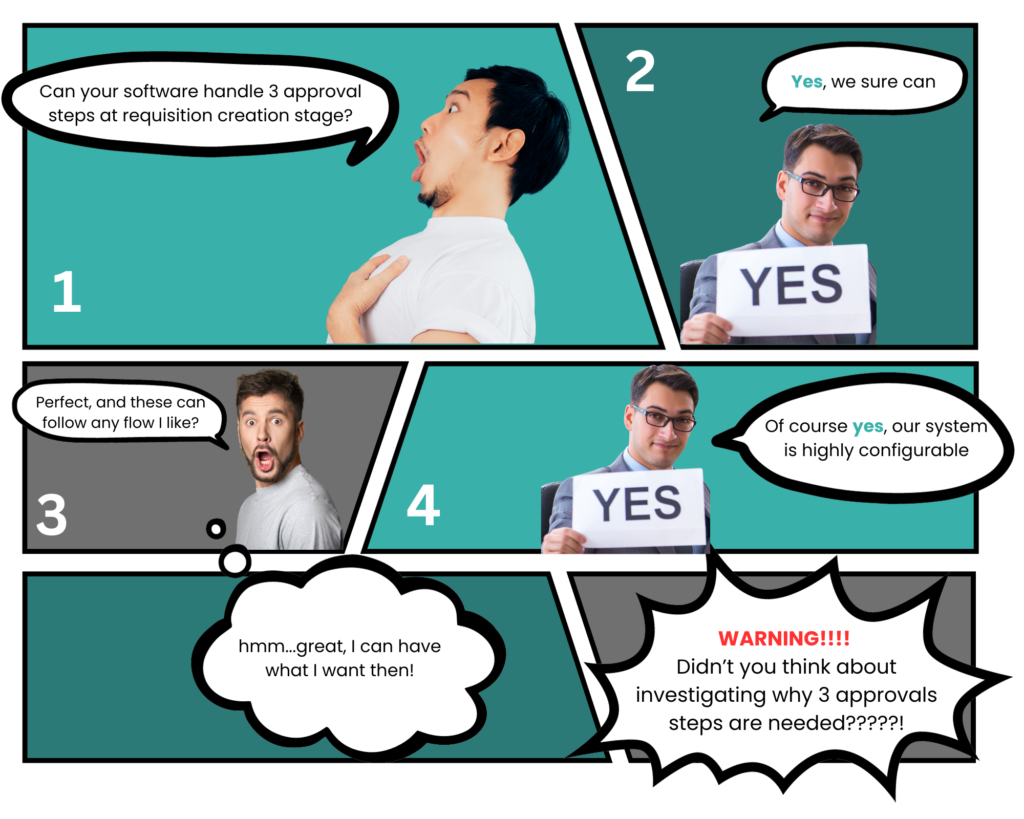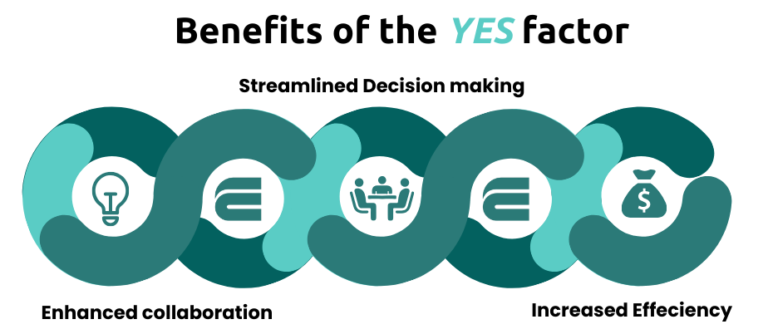

Thanks for taking the time to open and read my points of view, I’m extremely passionate about all the topics I blog about and even if you take one thing from this let me know.
This is not my attempt at creating a new reality show for the extended workforce, although that would be quite fun I think!, but more about my experiences I have seen over the years when gathering scope of services and important requirements that set the tone of a buyers extended workforce lifecycle.
The fact of the matter is that the use of the word ‘YES’ can be more of a negative than positive. When it comes to gathering scope and important requirements, it’s of course very important to ensure both providers and buyers get that all important word out in discussions. The challenge is the follow-up and further questioning, how many times have you heard about discussions like the below?


If I have one thing that scares me is the use of the words ‘highly configurable’, what does that mean bar giving a yes answer in a far to open ended way? If the answers back is just ‘YES’ then on most occasions the buyer only finds out far to late that this means ‘It’s configurable, but that requirement will actually require development as we don’t support it”. I’m not saying this happens all the time, but the truth is that it does and when there is a lack of questioning to challenge the ‘yes’/positive response’ then the path starts to wind in a different way to the expected one.
It is all too easy to fall into the habit of simply saying “yes” to scope needs and requirements without questioning them. This approach may seem efficient and timesaving, but it can have significant implications for buyers and providers. I wanted to share my thoughts on the impact of just saying yes to requirements rather than asking why, highlighting both the potential benefits, drawbacks, impact on partners and buyers, as well as cost.
Let’s start with some of the Benefits of Saying Yes:

By accepting requirements without questioning them, you can streamline the decision-making process. This can be particularly useful in situations where time is of the essence or when there is a need for immediate action, and the requirement is of low importance.
Saying yes to requirements can foster a sense of teamwork and cooperation, causing enhanced collaboration. It demonstrates a willingness to trust and support others’ judgment, which can lead to stronger relationships and improved collaboration across buyer and partner contacts.
Accepting requirements without questioning them can save time and resources that would otherwise be spent on debates or discussions. This can result in faster project completion, increased productivity, and efficiency.
Although these benefits are okay, the challenges of saying “Yes” I think overweigh them. From an overarching perspective these challenges could be:
If we focus more on the impact of buyer’s verse providers, it provides two very different sides of the coin. When the coin falls on the buyer side you can be sure to see several negative impacts:

When you take all these points into account I think it very important to find a balance, it is crucial to strike a balance between acceptance and further questioning. By adopting a more nuanced approach, buyers and providers can experience the advantages of streamlined decision-making and collaboration while also ensuring a thorough understanding of the requirements and potential for improvement.

Here are some strategies I would use to find this balance:
Seek Clarification and Understanding: Both buyers and providers should not hesitate to ask why when faced with requirements. Seeking clarification helps ensure a shared understanding of the underlying rationale and allows for more informed decision-making.
Evaluate feasibility: Assess the feasibility of the requirements before committing to them. Consider factors such as available scope of the potential solutions on offer, resources, time constraints, and potential risks.
Offer suggestions: If you have concerns or alternative ideas, communicate them constructively. This allows for a collaborative discussion and potentially leads to better outcomes.
Continuously learn and adapt: Reflect on past experiences to identify patterns or recurring issues. Use this knowledge to improve decision-making and adapt your approach to requirements.
Establish Clear Communication Channels: Buyers and providers should maintain open lines of communication to ensure that requirements are fully understood and aligned with expectations. Regular check-ins and progress updates can help address any misunderstandings or gaps in understanding.
Encourage Collaboration and Expertise: Providers should actively engage in discussions with buyers, offering their expertise and insights to challenge assumptions and explore alternative solutions. Buyers should be open to providers’ suggestions and be willing to consider different perspectives.
It’s important to find that right balance, for me this comes with experience and knowing what questions to ask and when.
Finding it will help ensure you don’t expose yourself to additional costs and scope creep. The last thing a buyer wants is having to deal with unnecessary expenses as well as costs for additional change requests because they were not covered during initial discussions.
It leads to unhappy buyers and users, which gives the perception that the provider doesn’t know their own system well enough. I’m honest enough to say that I have been there and learnt from it.
A provider will also experience cost implications with the chance of over-engineering a solution and then having to spend considerable time reconfiguring or developing. Scope creep sounds like it’s from a bad eighties’ movie, but both buyers and providers will continue to re-watch that film unless the right balance is found. Who wants to explain to all those project resources that they can’t move off a successful implementation, and must repeat requirements and user acceptance, all because of the YES factor. I have seen buyer and project teams lose significant morale and motivation just because of this little three letter word.
In conclusion, Yes is not a dirty word! BUT it’s one that needs to be used at the right time and not be taken lightly. If you wish to dig deeper or engage EW Scope to ensure that teams and project are correctly governed and set-up to achieve success, then please get in touch.
If you want to discuss How EW Scope can ensure you find that right balance, please get in touch.
EW Scope is here to support the success of your extended workforce solutions.
Copyright 2024 EW Scope Ltd. All rights reserved.
A private limited company incorporated in Scotland under SC764134

We use cookies on our website to give you the most relevant experience by remembering your preferences and repeat visits. By clicking accept, you agree to the use of all cookies.